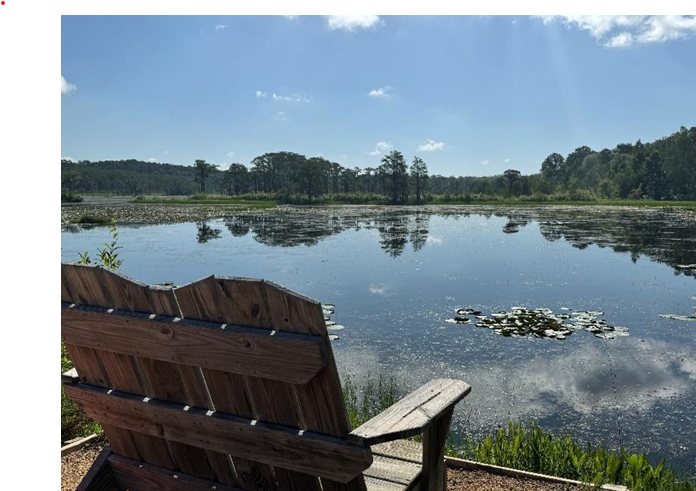Urban Nature Paradox: What Buffalo Can Learn from Florida and Houston
By Christin Bratton Environmental Scientist | Founder, Terra on the Bench™ Studios
Everywhere I go, cities are obsessed with looking sustainable. Rooftop gardens, shiny bike lanes, “eco districts” that cost more in branding than in real green infrastructure—it’s what I call the Urban Nature Paradox. Cities love the idea of nature, but keep building in ways that suffocate it. The murals show trees; the plans erase them.
I’ve spent time in over seven cities across Florida and in Houston this year, and I’ve noticed a pattern: everyone wants to be “green,” but few know what that actually means. And that’s where Buffalo can learn a few things.
Florida: Blazing Growth, Breaking Limits
Florida is growing faster than its environment can handle. Trees are being cleared nonstop for apartments, stores, and parking lots. I’ve driven through places where, one year, you see a construction site with only the foundation, and the next year there’s a full complex with residents moving in.
The Florida Museum defines this as urban sprawl—low-density housing, single-use development, and heavy car reliance. And that’s exactly what’s straining the state’s natural systems (Florida Museum; Defending Rural Florida).
To be fair, some planners are trying to do it right—building greener infrastructure and more walkable neighborhoods (SN Land Planning). But rapid expansion leaves little time for sustainable design. In Orlando, for example, the skyline grows taller, but so do traffic jams, smog, and the heat island effect. It’s like nobody knows when to stop pouring into the glass—so instead of learning restraint, we just grab another glass and call it innovation.
Houston: Green Effort, Uneven Results
Houston is trying, but the results are mixed. The city’s Bayou Greenways project has added over 100 million dollars’ worth of new parks and trails (Houston Parks Board), and sustainable construction is picking up (Center for Sustainability & Excellence).
One cool concept I found there is Indigo, a 235-acre “agri-hood” built around walkability, urban farming, and shared green spaces (Urban Land Institute). It’s designed like a modern eco village—small businesses, trails, and community gardens replacing endless car-filled suburbs.
But Houston’s reality is still uneven. Green projects usually land in wealthier districts while older communities face flooding, air pollution, and neglected infrastructure. You can feel that imbalance when you drive through the city—the closer you get to downtown, the thicker the smog and the busier the highways.
Buffalo: Still in the Sweet Spot
Buffalo has something those places don’t—time. Our city isn’t drowning in sprawl yet. We can still shape development before it turns into chaos.
Take The Rails Townhomes. They’re sleek and modern, but instead of chasing shiny new builds, we should focus on keeping what’s already here alive—repairing homes, reusing buildings, and turning cleared lots into green spaces instead of more concrete.
Equity matters too. In Florida, green infrastructure mostly benefits wealthy areas like Southwood in Tallahassee or Lake Mary—places with homeowners’ associations that even hire crews to polish their “Welcome” signs. Buffalo can do better. Imagine more tree canopies and parks in neighborhoods that actually need shade, space, and fresh air.
Nature first, development second. In Florida, sea-level rise and flooding expose the cost of ignoring ecosystems (Florida Climate Institute). Buffalo’s challenges are different—aging infrastructure and unpredictable weather—but the principle is the same: design with nature, not against it.
Small steps, big results. Buffalo’s size is an advantage. We don’t need mega-projects to make an impact. Expanding the tree canopy, restoring brownfields, and maintaining what we already have can go a long way. I spoke with Executive Director Terry Alford, who’s pushing for green development along the Michigan Street Corridor—that’s exactly the kind of leadership we need.
The Takeaway
Buffalo won’t need to fake its “green” identity if it plans carefully. Florida shows what happens when growth outruns common sense. Houston shows what happens when green progress skips the people who need it most.
Buffalo can do better—by growing slow, staying authentic, and keeping nature in the frame instead of the background. We always say, “Keep Buffalo a secret,” but maybe that’s because we already have the blueprint. We just have to act.
When I sit on “the bench” here at home, I still find hope in the cracks—the ones where grass forces its way through the sidewalk. That’s Buffalo: not perfect, but persistent.
About the Author
Christin Bratton is an Environmental Scientist and the founder of Terra on the Bench™ Studios, a creative collective dedicated to environmental storytelling and advocacy. Through her media project E3O Files, she explores environmental justice, sustainability, and the everyday connections between people and the planet. I’ve called Buffalo home since I was seven. I came up through the city’s public schools, took part in every program and opportunity this community offered, and those roots shaped who I am. Now, at 26, I work in environmental policy across the country—but I always return to Buffalo to invest what I’ve learned back into it.
About Terra on the Bench™
Terra on the Bench™ is a creative collective and media studio founded by environmental scientist Christin Bratton. We expose truths, educate communities, explore nature, and oppose environmental injustice through storytelling that bridges science and culture.
Our work sits at the intersection of environmental policy, creative media, and social awareness. Through articles, coloring books, digital art, and documentary-style features, Terra on the Bench™ Studios transforms complex sustainability issues into conversations people actually want to have.
At its core, Terra on the Bench™ is a seat of observation—a place to pause, reflect, and rethink how humans live with the planet. From disaster zones to city parks, from Buffalo’s East Side to coastlines across the country, we bring environmental science to life through curiosity, creativity, and truth-telling.
Projects under Terra on the Bench™ Studios include:
E3O Files — a media series and podcast that Expose, Educate, Explore, and Oppose environmental injustice.
Terra Verdant — a character-driven art and storytelling project that inspires kids to protect the planet through creativity.


